Task Manager Shortcut: How to Create & Use it
You can access Task Manager with a simple click using a shortcut
6 min. read
Updated on
Read our disclosure page to find out how can you help Windows Report sustain the editorial team. Read more
Key notes
- Users have been looking for ways to open Task Manager in Windows 11, as it can no longer be accessed through the taskbar.
- There are a few combination keys to open the Windows tool, besides the popular Ctrl + Alt + Delete one.
- Note that you can also access Task Manager with Windows 11's File Explorer.
- However, the simplest way to access it is via a custom-made shortcut.
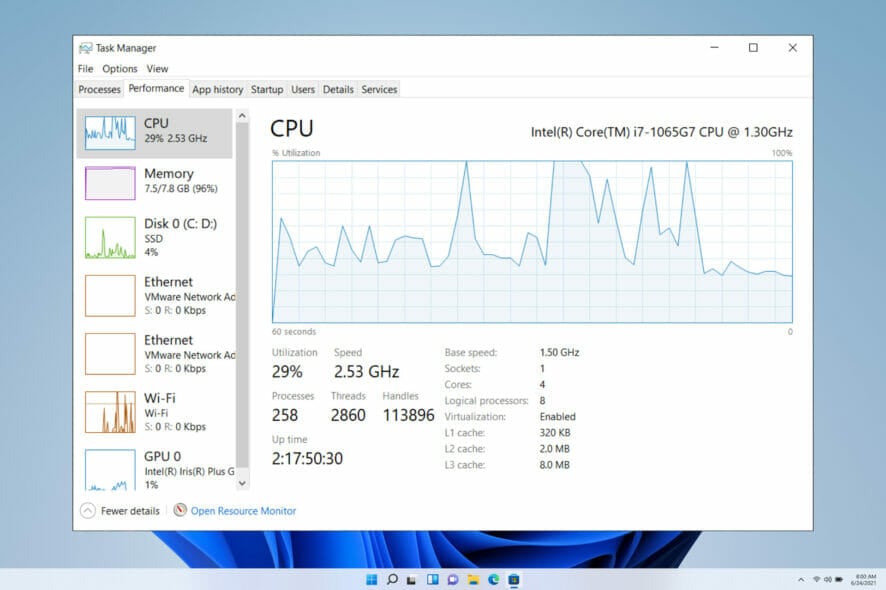
One of the core tools for monitoring the well-being of your computer system is none other than Task Manager. If in the previous OS Task Manager was just a right-click away, in Windows 11 this is no longer the case.
According to Microsoft, a lot of changes were made within this operating system to adapt to the people’s needs and provide the best experience yet:
What was so powerful was the shift in the PC we saw and felt – from something practical and functional to something personal and emotional. This is what inspired us as we were building the next generation of Windows.
Panos Panay, chief product officer for Windows+ devices at Microsoft
Don’t worry though, as we’ve decided to create a step-by-step guide so that you can rapidly access Task Manager.
Why is Task Manager important?
Task Manager is a handy little tool that lets you see the programs that are opened in the background, what processes each of these programs has, allows you to customize which apps you want to open on startup, and more.
There are 7 tabs in total, with each offering a different set of tools: processes, performance, app history, startup, users, details, and services.
The processes tab is probably one of the most used ones. It is one of the only ways you can close an unwanted program that is causing you trouble.
Here, you can also monitor how much CPU, RAM, and power usage each program takes up.
The performance tab gives you a detailed look into your PC performance while the app history tab shows you the resource usage for the current user account and lets you delete it.
With Task Manager, you can also manage the apps you want to open when starting your PC using the Startup tab.
Task Manager can also be used to give higher priority to specific applications and allocate more CPU power to certain processes.
All things considered, it’s become essential to know how to access Task Manager as soon as possible in order to improve your computer’s performance and get rid of some PC issues faster.
The only inconvenience is that getting to the Task Manager can be a real pain. There are a couple of methods for you to access it, but they all involve key combinations that aren’t easy to remember.
How do I open the Task Manager in Windows 11?
1. Use different keyboard shortcuts
- Press Ctrl + Alt + Del and then choose Task Manager from the menu.
- Simultaneously press Ctrl + Shift + Esc to quickly open the Task Manager.
- Press Windows + X to access the Power User menu. Select Task Manager from the options.
2. Use Windows Settings
- Click on the Search icon, look for Task Manager, and click on the result.
- Look for taskmgr.exe in File Explorer and click on Taskmgr.exe app result to open it.
- Press the Windows + R keys, then type taskmgr in the Run Box and hit Enter. Task Manager will run instantly.
- You can also open it using Command Prompt. Once again, open the Run Box by pressing the Windows + R keys but this time type cmd and click on OK. When the Command Prompt window opens, type taskmgr and hit Enter.
These are the quickest ways to open Windows 11 Task Manager using the keyboard or the settings of your computer.
Given that there are so many options to choose from, it was only a matter of time until you may ask yourself if there is a way to create a shortcut to it.
How can I create a Task Manager shortcut in Windows 11?
1. Pin it to the Taskbar
- Open Task Manager using one of the above methods.
- Right-click the icon on the Taskbar and select Pin to Taskbar.
- You can now access Task Manager from the taskbar.
2. Create a desktop shortcut for Task Manager
1. Right-click an empty spot on your desktop and select New > Shortcut.
2. In the location search box, type in:
C:\Windows\System32\Taskmgr.exe3. Click on Next.
4. Rename the shortcut Task Manager.
5. Click on Finish to create the shortcut.
To quickly access Task Manager at any time through just a simple click, you can create a desktop shortcut for it.
By following the simple steps above, you will be able to access the Task Manager any time of day with just a single click. This way, you won’t have to rely on the access methods mentioned earlier.
Why is Task Manager not opening?
A lot can prevent Task Manager from opening or working correctly, as it can either be disabled by your Administrator or you might have a corrupt user account.
However, malware is usually the number one cause of faults in your system and Task Manager makes no exception. Checking your device for viruses could be just the solution you need to fix the error.
Using an antivirus you can trust for your Windows 11 computer is essential if you want everything to run smoothly and protect yourself from malware. Updating your PC regularly also makes an improvement in the overall performance of the device.
A lot of issues within the operating system could be tracked to the registry files. If Task Manager is not working properly, you may need to modify some settings.
Even more, check what steps you need to take when Task Manager is slow to open or respond and make sure everything runs smoothly on your device.
How do I clean up Task Manager?
One of the go-to solutions when dealing with a lot of programs that slow down your computer is Task Manager’s end process option.
But knowing how to make the difference between apps you need and those that are only using your system resources such as spyware is essential when using Task Manager.
The first rule is to avoid ending Windows processes along with any other processes you don’t recognize. These are usually found at the bottom of the list in the Processes tab so make sure not to close them.
Note that the apps that you can close with no problems and the ones that can slow down your computer the most can be found in the first part of the tab, under Apps.
Look for the programs that take up the most memory or CPU and close the ones that you are not using.
If you learn to recognize which apps you need to have open and which not, you can considerably improve the overall function of your PC.
So, there you have it, the easiest ways to get to Task Manager without the Ctrl + Alt + Delete combination keys on Windows 11.
And don’t forget that you can also find some of the best shortcut software and take the next step in navigating on your device.
If you want to read more articles regarding Windows 11 tips and tricks, let us know in the comments section below.
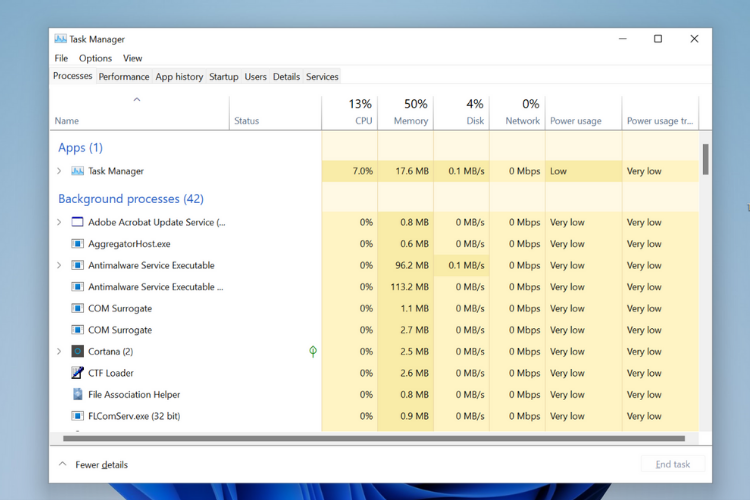

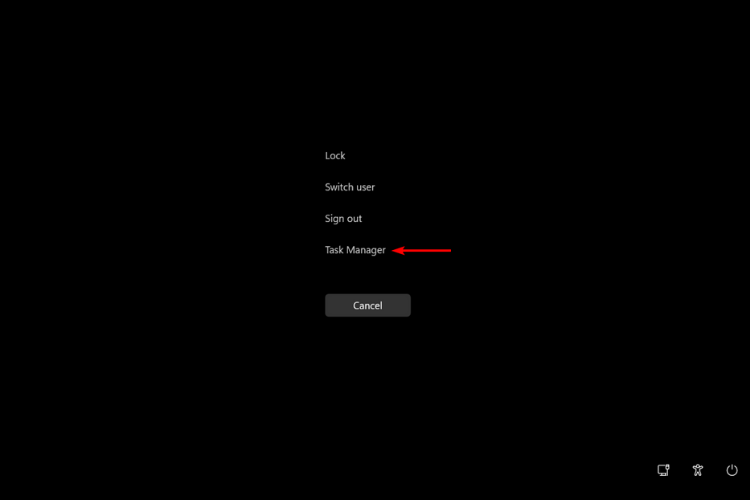
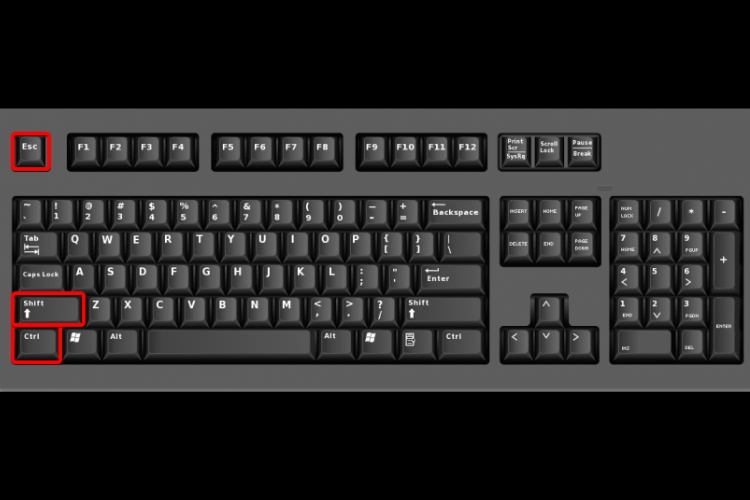
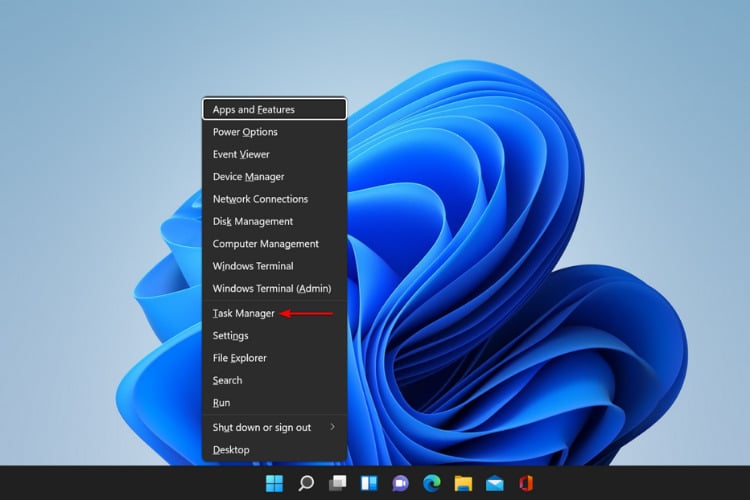
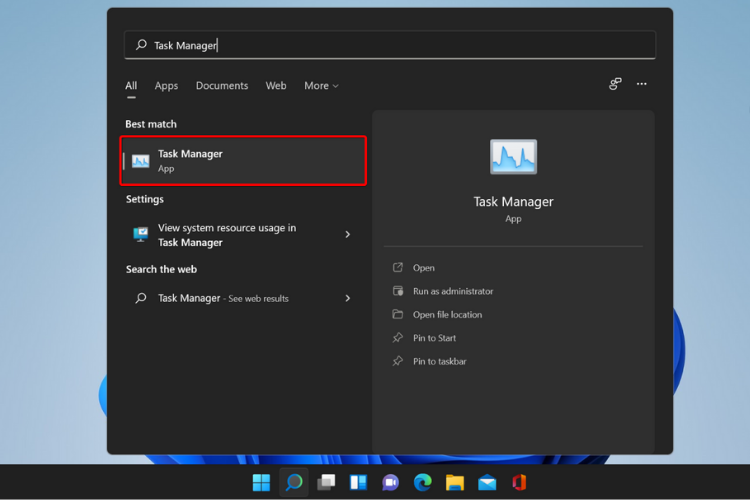

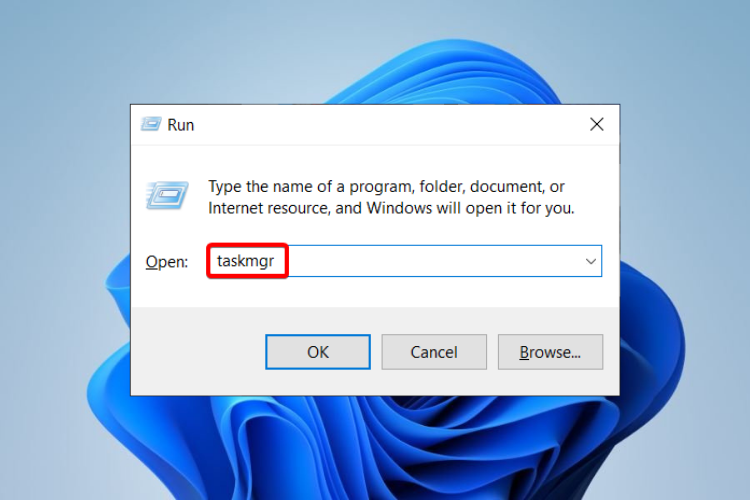

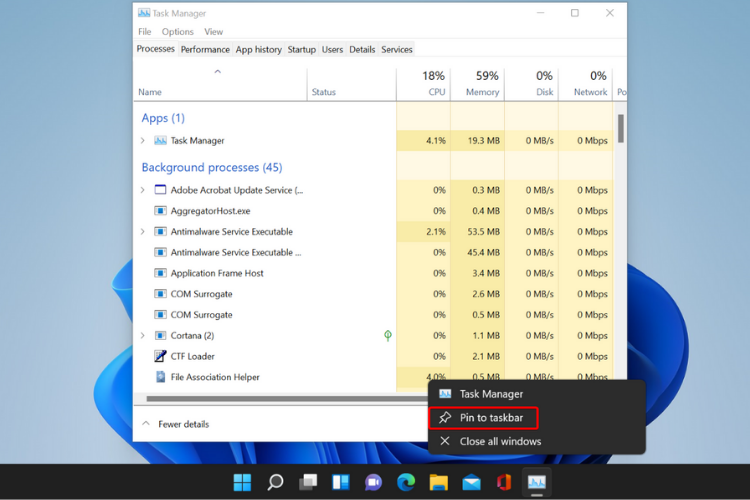
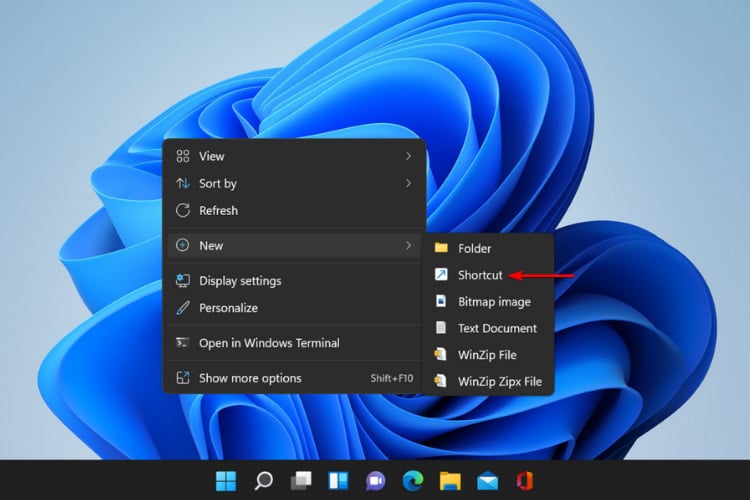
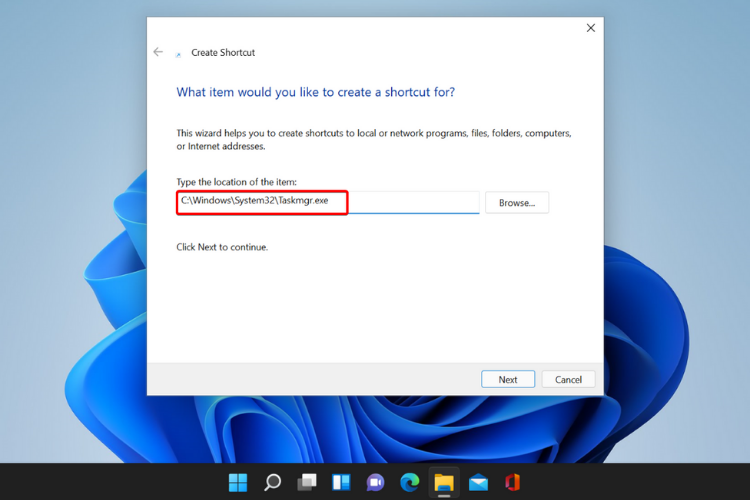
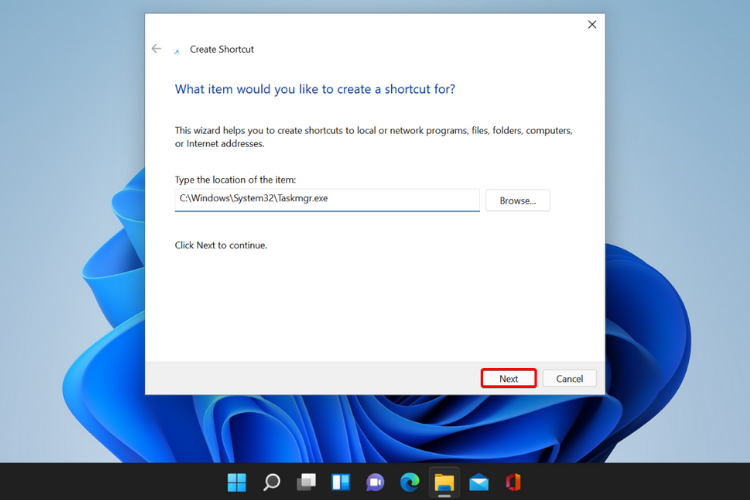

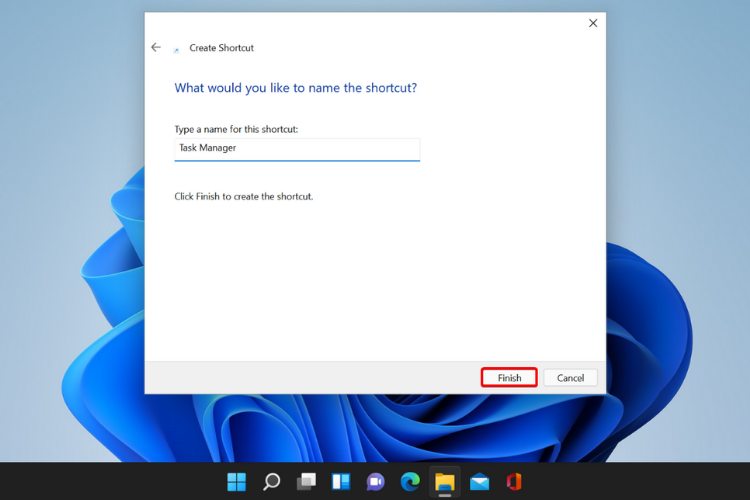









User forum
0 messages